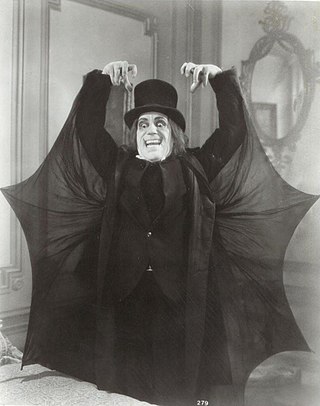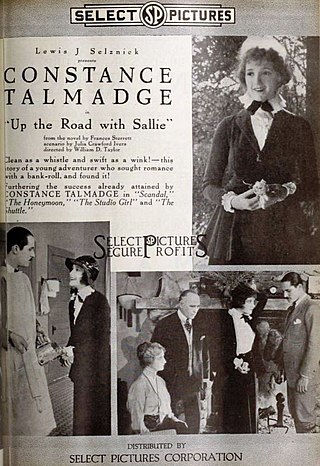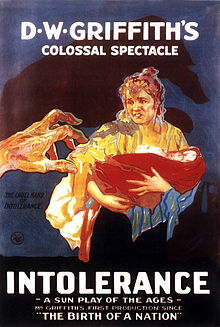
The Birth of a Nation, originally called The Clansman, is a 1915 American silent epic drama film directed by D. W. Griffith and starring Lillian Gish. The screenplay is adapted from Thomas Dixon Jr.'s 1905 novel and play The Clansman. Griffith co-wrote the screenplay with Frank E. Woods and produced the film with Harry Aitken.

David Wark Griffith was an American film director. Considered one of the most influential figures in the history of the motion picture, he pioneered many aspects of film editing and expanded the art of the narrative film.

Belshazzar was the son and crown prince of Nabonidus, the last king of the Neo-Babylonian Empire. Through his mother, he might have been a grandson of Nebuchadnezzar II, though this is not certain and the claims to kinship with Nebuchadnezzar may have originated from royal propaganda.

Napoléon is a 1927 French silent epic historical film, produced, and directed by Abel Gance that tells the story of Napoleon's early years. It is also the only film to use Polyvision. On screen, the title is Napoléon vu par Abel Gance, meaning "Napoleon as seen by Abel Gance". The film is recognised as a masterwork of fluid camera motion, produced in a time when most camera shots were static. Many innovative techniques were used to make the film, including fast cutting, extensive close-ups, a wide variety of hand-held camera shots, location shooting, point of view shots, multiple-camera setups, multiple exposure, superimposition, underwater camera, kaleidoscopic images, film tinting, split screen and mosaic shots, multi-screen projection, and other visual effects. A revival of Napoléon in the mid-1950s influenced the filmmakers of the French New Wave. The film used the Keller-Dorian cinematography for its color sequences.

Nabonidus was the last king of the Neo-Babylonian Empire, ruling from 556 BC to the fall of Babylon to the Achaemenian Empire under Cyrus the Great in 539 BC. Nabonidus was the last native ruler of ancient Mesopotamia, the end of his reign marking the end of thousands of years of Sumero-Akkadian states, kingdoms and empires. He was also the last independent king of Babylon. Regarded as one of the most vibrant and individualistic rulers of his time, Nabonidus is characterised by some scholars as an unorthodox religious reformer and as the first archaeologist.

Norma Marie Talmadge was an American actress and film producer of the silent era. A major box-office draw for more than a decade, her career reached a peak in the early 1920s, when she ranked among the most popular idols of the American screen.

Constance Alice Talmadge was an American silent film star. She was the sister of actresses Norma and Natalie Talmadge.

Belshazzar's feast, or the story of the writing on the wall, tells how Belshazzar holds a great feast and drinks from the vessels that had been looted in the destruction of the First Temple. A hand appears and writes on the wall. The terrified Belshazzar calls for his wise men, but they are unable to read the writing. The queen advises him to send for Daniel, renowned for his wisdom. Daniel reminds Belshazzar that his father Nebuchadnezzar, when he became arrogant, was thrown down until he learned that God has sovereignty over the kingdom of men. Belshazzar had likewise blasphemed God, and so God sent this hand. Daniel then reads the message and interprets it: God has numbered Belshazzar's days, he has been weighed and found wanting, and his kingdom will be given to the Medes and the Persians.
That very night Belshazzar, the Chaldean [Babylonian] king, was killed. And Darius the Mede received the kingdom […]

A lost film is a feature or short film in which the original negative or copies are not known to exist in any studio archive, private collection, or public archive. Films can be wholly or partially lost for a number of reasons. Early films were not thought to have value beyond their theatrical run, so many were discarded afterward. Nitrate film used in early pictures was highly flammable and susceptible to degradation. The Library of Congress began acquiring copies of American films in 1909, but not all were kept. Due to improvements in film technology and recordkeeping, few films produced in the 1950s or beyond have been lost.

Kevin Brownlow is a British film historian, television documentary-maker, filmmaker, author, and film editor. He is best known for his work documenting the history of the silent era, having become interested in silent film at the age of eleven. This interest grew into a career spent documenting and restoring film. Brownlow has rescued many silent films and their history. His initiative in interviewing many largely forgotten, elderly film pioneers in the 1960s and 1970s preserved a legacy of early mass-entertainment cinema. He received an Academy Honorary Award at the 2nd Annual Governors Awards given by the Academy of Motion Picture Arts and Sciences on 13 November 2010. This was the first occasion on which an Academy Honorary Award was given to a film preservationist.
Unknown Chaplin is a three-part 1983 British documentary series about the career and methods of the silent film luminary Charlie Chaplin, using previously unseen film for illustration. The series consist of three episodes, with title My Happiest Years, The Great Director and Hidden Treasures.

Darius the Mede is mentioned in the Book of Daniel as King of Babylon between Belshazzar and Cyrus the Great, but he is not known to secular history and there is no space in the historical timeline between those two verified kings.
Buster Keaton: A Hard Act to Follow is a three-part television documentary series made in 1987, charting the life and career of Buster Keaton. The series was written and produced by Kevin Brownlow and David Gill for Thames Television and narrated by Lindsay Anderson. It was one of three such series produced as follow-ups to Brownlow and Gill's epic documentary series Hollywood (1980), falling between Unknown Chaplin (1983) and Harold Lloyd: The Third Genius (1989).
Blackhawk Films, from the 1950s through the early 1980s, marketed motion pictures on 16mm, 8mm and Super 8 film. Most were vintage one- or two-reel short subjects, usually comedies starring Laurel and Hardy, Our Gang, Charlie Chaplin, Buster Keaton, and other famous comedy series of the past. Blackhawk also offered newsreels, documentaries, and silent feature films. With the rise of the video market in the early 1980s, Blackhawk began producing video versions of many of their titles in 1981 and within a few years no longer manufactured film copies. The company was later purchased by Republic Pictures in 1985, and the film elements still later by archivist David Shepard.

The fall of Babylon was the decisive event that marked the total defeat of the Neo-Babylonian Empire to the Achaemenid Persian Empire in 539 BCE.

Good Morning, Babylon is a 1987 drama film written and directed by Paolo and Vittorio Taviani, starring Vincent Spano, Joaquim de Almeida, Greta Scacchi, Désirée Nosbusch, Omero Antonutti, and Charles Dance. The film follows the story of two Italian brothers who emigrate to America and find work as set designers for D.W. Griffith's silent film epic Intolerance (1916).

Raymond Rohauer was an American film collector and distributor.
Photoplay Productions is an independent film company, based in the UK, under the direction of Kevin Brownlow and Patrick Stanbury. Is one of the few independent companies to operate in the revival of interest in the lost world of silent cinema and has been recognised as a driving force in the subject.
The Cohen Film Collection is a film archive currently held by Cohen Media Group. Containing several hundreds of rare and classic movies spanning from the silent film era to the present day, it was previously referred to as the Rohauer Library prior to Cohen Media Group's ownership in 2011.

Up the Road with Sallie is a surviving 1918 silent film comedy-romance directed by William Desmond Taylor and starring Constance Talmadge. It was produced by Lewis J. Selznick and released through his Select Picture Corporation. It is preserved in the UCLA Film and Television Archive.






















